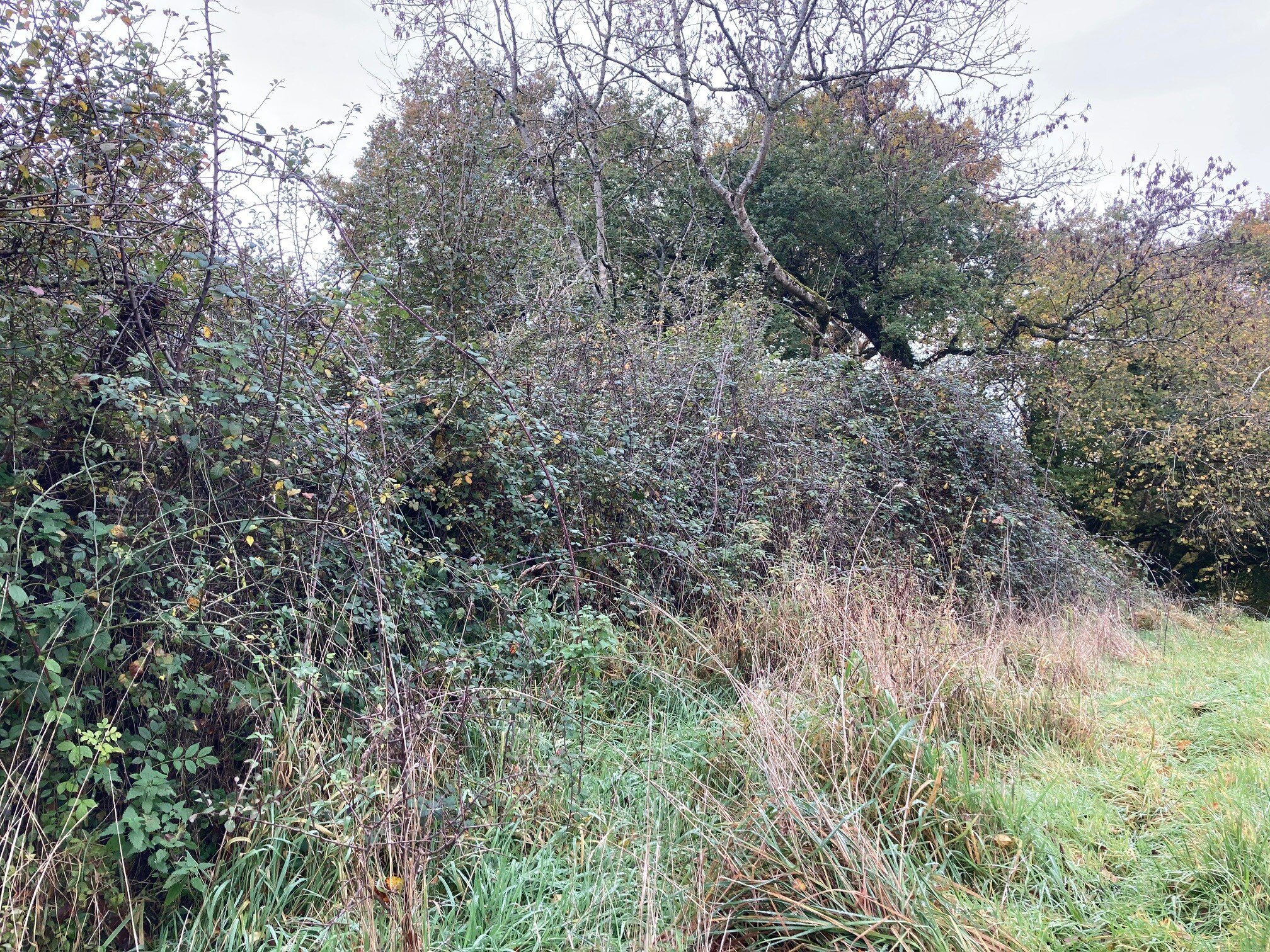UWNR is dissected by three lines of mixed native hedge - planted roughly 3 - 4 decades ago. In turn, a long run of hedgerow creates a barrier between the land and the lane on the eastern flank. On buying the land, I was aware of these hedge-bones - something to work with and enhance. It was clear from the outset that none of these flora corridors had been managed in any way - they were lanky, scrawny and uninviting windblown habitats, at best. In the first winter at UWNR I expended much time trying to work out what I could do to create dense & tall hedgerows, which would draw in species like blackbirds, dormice, wrens and wintering fieldfares. As ever, ecologist Gareth Harris had the answer - conservation hedge laying.
Ka-ching! 5 winters on and more than 30% of the hedges have been conservation laid to produce the impenetrable green walls, I had imagined. No, they have exceeded what I had envisaged. (I need to add, that this is the hardest graft I do - it is hardcore. Kevlar lined gauntlets are essential).
So what has come from this graft then. For me the most telling & raucous outcome occurred in the winter of 2020 - 21. For weeks UWNR was flooded with fieldfares, redwings and blackbirds all vying for the plentiful spoils, gorging themselves on holly berries, sloes, rosehips, ivy berries and blackberry. The avian profusion was really something. And each night this gaggle would roost in the hedges…their chatter slowly ebbing as the dark took over.
Over the past year I have read two really extraordinary books - Rebirding by Ben MacDonald and Orchard: A Year in England’s Eden by Ben MacDonald and Nicholas Gates. They have a lot to say about hedgerows!
From Orchard: A Year in England’s Eden by Ben MacDonald and Nicholas Gates, pages 206 & 207; ‘…the annual October destruction of hedgerows – as nature is given its worst ever haircut – is one of the most senseless acts of vandalism that we, as a nation, have become accustomed to in recent decades. Such destruction continues at large across our country. In the slashed, stunted metre-high hedgerows that increasingly constitute the norm, bullfinches, warblers, marsh tits need not apply.’ ‘The chilling mathematical hedge-lines we see in most of Britain today are entirely useless to most of our scrub-evolved wildlife’.
Mike Perry. m-perry.com
From Rebirding by Ben MacDonald, page 36; ‘Our native (pre-historic) scrub mosaic, where seed-eating birds foraged in disturbed grassland, and nested in dense bushes, was reincarnated in the hedgerow’.
So there we have it - rare, rambling, dense and tall mixed hedges are proxies for the wild scrubland that was a feature of our prehistoric land. It was a land that supported species like turtle doves - they too, are rare now.
With this context, I was recently visited at UWNR by a local dairy farmer. Our conversation turned to the topic of hedgerow management and I waxed on and on about the ecological benefits of conservation hedge laying. When we explored the possibility of slackening their severe annual hedge flailing, the block was the fact that the hedges at UWNR were untidy (unseemly?) and theirs neat, tidy & controlled. I wonder if this is a prevailing attitude? I was also struck by their lack of knowledge about the role hedges could play…but then why should a farmer understand ecology….not sure my dairy-farming Dad did?
Tidy really is the enemy of nature and to quote the father of UK conservation, Roy Dennis, from Cottongrass Summer, page 95; ‘Over my lifetime, I’ve seen many examples of misplaced tidiness, even on nature reserves. A tree falls over and someone immediately thinks they have to tidy it up, cut it into logs, take it home and burn the remaining brash. Well, that’s not much use to nature’.
There is hope - ELMS (which replaces the CAP) may drive change in how hedgerows are managed, but for some species it is perhaps too little, too late.
To finish a wonderful picture from the sky-table…just love those talons and the what-you-looking-at stare!
And please read about our latest John Muir Award session (click on the tab below and scroll to the bottom of the page)….we are up and running again, which is really amazing…I have missed this part of our work.


